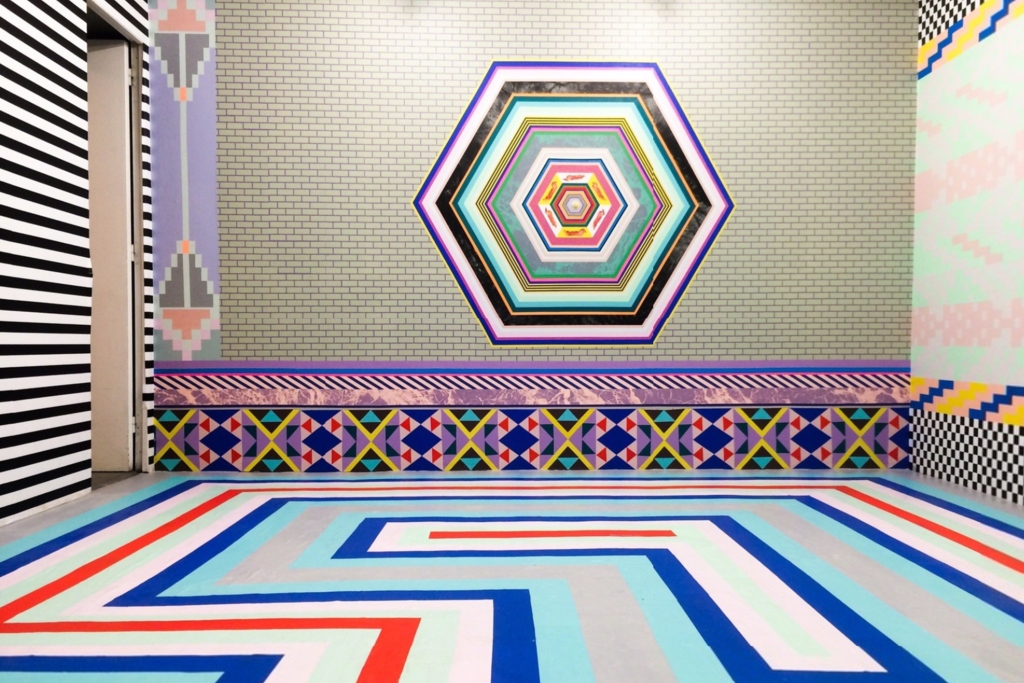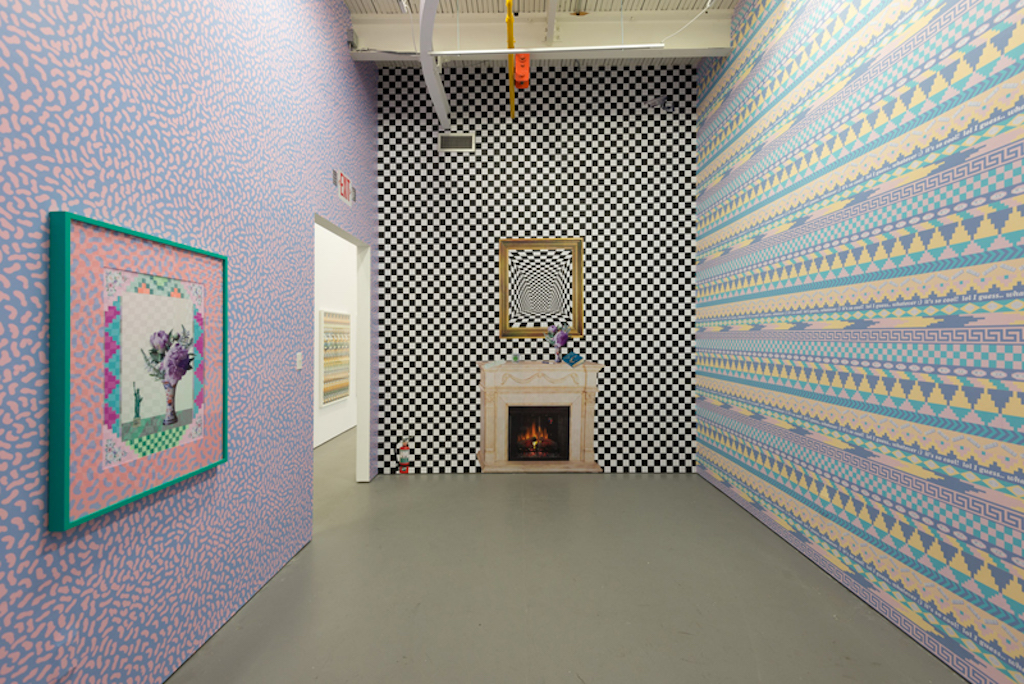Dominique Pétrin is a multidisciplinary artist whose work has been showcased all over the world. She has collaborated alongside artists like Banksy and Sophie Calle. And this year she has created the leading art installation for Toronto’s Power Ball. Her piece includes a hyper-stimulating technicolour room. View the Vibe caught up with Pétrin in Toronto where she spoke about her career, the Banksy experience and her latest artistic endeavours.
One of Pétrin latest and most celebrated projects is her work for The Walled Off Hotel in Jerusalem. Banksy picked Pétrin to be a part of the artistic team who created the hotel to start a conversation about the Palestinian and Israeli divide. In 2017, Pétrin received the anonymous call from Banksy. Banksy instructed her to design the room which would feature art from a collapsed British colony. The artist was only given the room dimensions and few photos to work with, but the rest was up to her. The hotel includes carefully designed rooms by several artists from around the world and also has an art gallery inside.
ADVERTISEMENT |
She has been an artist in residency for institutions that include Le Dernier Cri, Marseille, France (2004), OMI International Artist’s Residency, New York (2014). Her most recent solo exhibition has been in Malaspina, Vancouver (2017).
Pétrin’s exhibit at the Power Ball will be a similar piece from her project I just wished Martha Stewart was here to tell me to chill down, like real down. The idea is to place people in a fully immersive environment where they can expect to see silkscreen on paper that has been carefully cut and designed to cover a whole room. Pétrin mixes social media algorithms and living spaces in this exhibit.
ADVERTISEMENT |
A QUICK Q&A WITH DOMINIQUE PÉTRIN
Q: What intrigues you about cyberculture and how long does it take for you to create these pieces?
It takes about 150 hours to install and a month of intensive printing. For the past eight years, I have been working on installations created in situ, composed of silkscreened paper. They’re cut, assembled and pasted to the walls in order to create immersive environments. I’m interested in creating social fabrics composed from corporate objects and patterns, social media, and the history of ornament, interweaving notions of craftsmanship, mass production and the ready-made.
Q: What do you hope people feel and take away from your work?
I hope people will get naked and dance in the streets.
Q: What does it feel like to have collaborated with someone like Banksy to use art for political awareness?
It was a life-changing experience. It changed my way of doing art. I allowed my sarcastic nature to get involved in the process.
Q: How much of your personal life impacts and inspires your art?
I do not make a difference between my personal life and my art. They nourish each other. I do not shut off from creation ever.
Q: What has been the most challenging part of pursuing a career as a full-time artist?
To accept that nothing is ever taken for granted and that one day you might get sick and will be in trouble. There is no security provided in making art, no certitude about what you are doing and the idea of success is vain. The art world is cruel and meaningless.
Making art has to come from a place of love.
ADVERTISEMENT |
Q: In the past, you have spoken about your career path into the arts as unconventional. Do you have any advice to up and coming artists who are trying to figure out their own way into this scene?
There is no right path, each one is different. Follow you character and your nature. Some people kiss asses, some don’t. Learn to think and write about your work.
Find allies and trustful persons to share your insecurities and advice each other. Be careful and brave at the same time. Have fun. That’s the best advice… have fun.
Q: You have been a musician, a performer and most recently a visual artist. Which do you prefer most and what is next for you?
I took all these roles at different times in my life. Each time, I felt at the right place, at the right moment. I evolved and grew through each of these practices and left when it felt like it wasn’t nourishing anymore or I was repeating myself. I don’t know what’s next, but it will be amazing.
ADVERTISEMENT |
Dominique Pétrin is represented in Canada by Antoine Ertaskiran. To check out more of her work and visit her latest exhibit, you can visit her website here.










